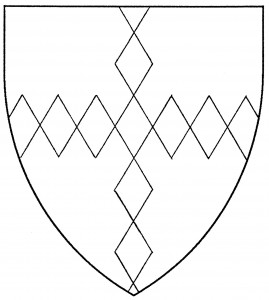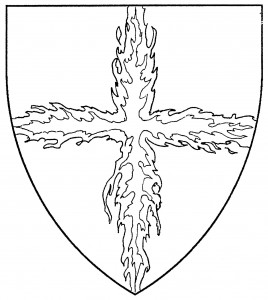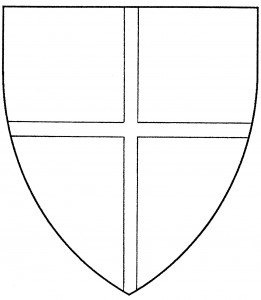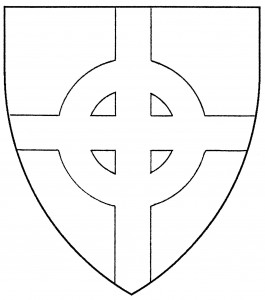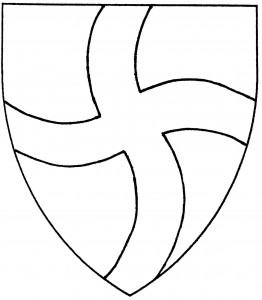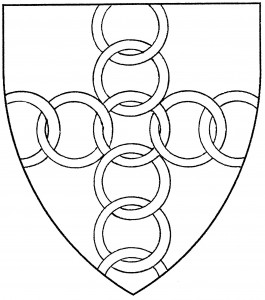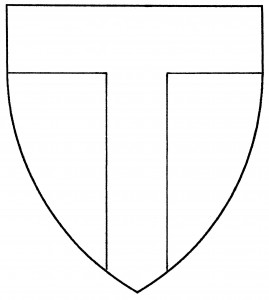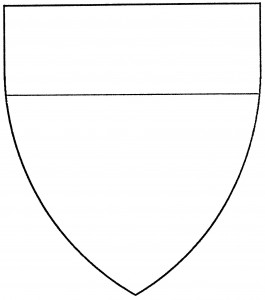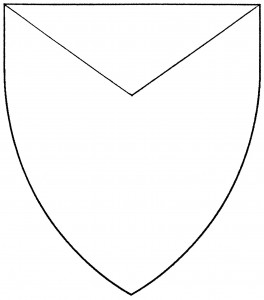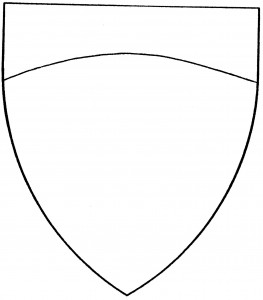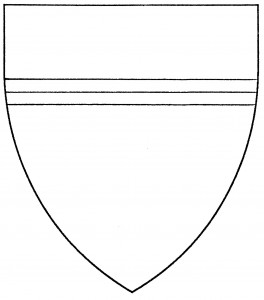
Cross (Period)
The cross is an heraldic ordinary, a vertical lath conjoined to a horizontal lath. As an ordinary, it is throughout by default, and subject to all the usual treatments – e.g., embattled, wavy, voided, cotised – but as the symbol of Christianity, it was elaborated and varied by the medievals more often than any other charge. Medieval heralds were familiar with roughly twenty types of cross, according to Brault [Coat of Arms, I(90), Summer 74, pp.54-64]; more than three hundred types may be found in Victorian heraldry books.
Of these latter, some were distinctions made only after period, which medievally were considered simple artistic variants (e.g., cross crosslet vs. cross bottony). Others were constructed of other charges, conjoined in the shape of a cross (e.g., cross of ermine spots); this was a period method of construction. Most of the crosses in Victorian texts, however, were never actually used in armory, but were the invention of heraldic writers.
The term “crusilly” refers to a field or charge semy of crosses crosslet. If another type of semy cross is desired, it must be specified, e.g., “crusilly couped” or “crusilly Maltese”.
The crosses illustrated in the following entries are all found in Society heraldry. Some were used medievally; some were constructed from four or five other charges; some were taken from Victorian texts, before those were deemed untrustworthy; some are taken from other contexts, such as jewelry; and some are Society inventions. Though the cross is normally throughout as an ordinary, most of its “discrete” forms are not throughout unless specifically blazoned so. Some variations can be combined in simple cases: e.g., a “cross flory nowy pierced” would combine those three treatments into a single cross.
Crosses that were found in period include:
cross of annulets braced, cross annulety, cross avellane, cross bottony, cross of Calatrava, cross of Calvary, cross clechy, cross couped, cross crescenty, cross crosslet, cross doubly pommeled, cross of ermine spots, cross fitchy, cross flory, cross formy, cross fouchetty, cross fourchy, cross of fusils, cross glandular, cross gringoly, cross of Jerusalem, key cross, Latin cross, Maltese cross, cross moline, cross parted and fretted, cross patonce, cross patriarchal, cross pomelly, cross portate, cross potent, cross quarter-pierced, cross rayonnant, cross of Santiago, cross swallowtailed, tau cross, cross of Toulouse, cross tripartite and fretted.
Crosses that are accepted in the Society, as of this writing:
Bowen cross, cross of Canterbury, Celtic cross, cross of Coldharbour, Coptic cross, cross estoile, cross humetty, cross of lozenges, cross of mascles, Norse sun cross, cross of pheons, cross pointed, cross quadrate, Russian Orthodox cross, cross of Samildanach, crux stellata.
Crosses which carry a step from period practice:
ankh, cross arrondi, cross nowy, cross of Saint Brigid.
Crosses which have been disallowed:
cross alisee, cross barby, cross of Cerdana, fillet cross, cross of flames, fylfot, cross gurgity, Non cross, Papal cross, star cross, Ukrainian sun cross.
For related charges, see chi-rho, crucifix, saltire. See also cypher charges, knot.
The King of Lochac bears: Quarterly azure and argent, on a cross gules a crown between four mullets of six points, in canton a laurel wreath argent.
Rulff Sørensøn bears: Gyronny azure and Or, a cross vert.
Elizabeth Feythe bears: Azure, a cross engrailed erminois.
Giovanni di Milano bears: Ermine, a cross cotised purpure.
